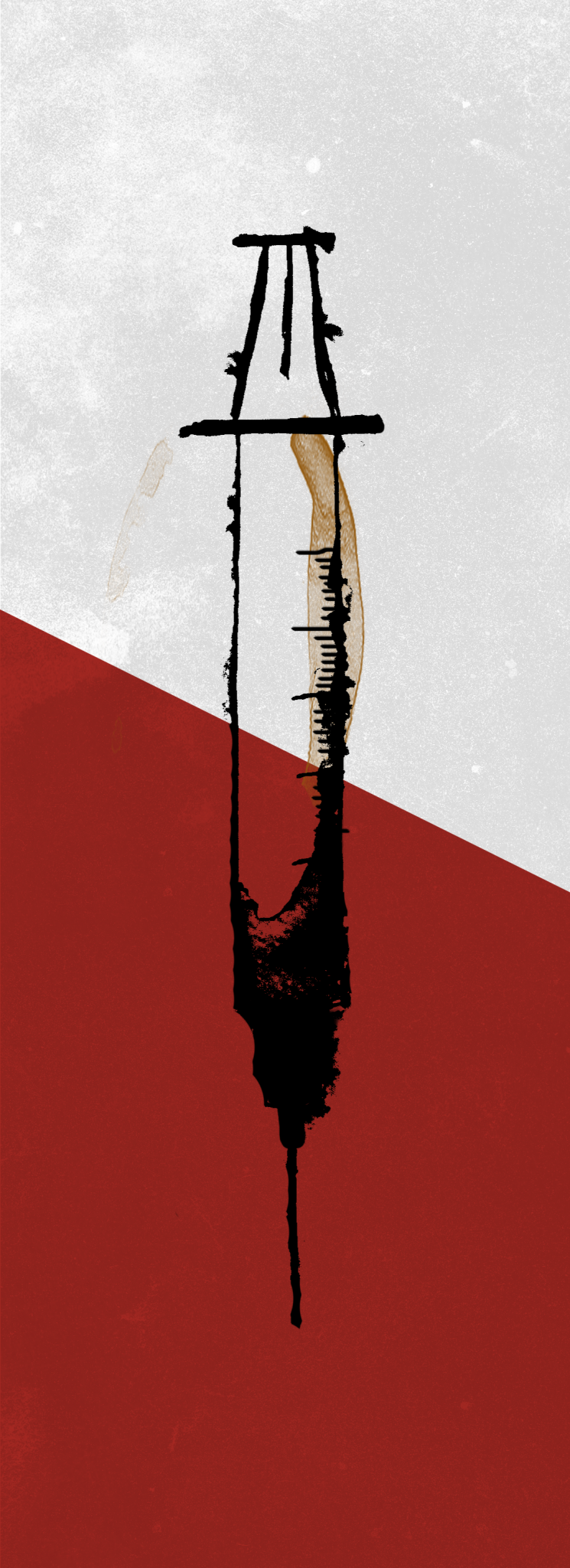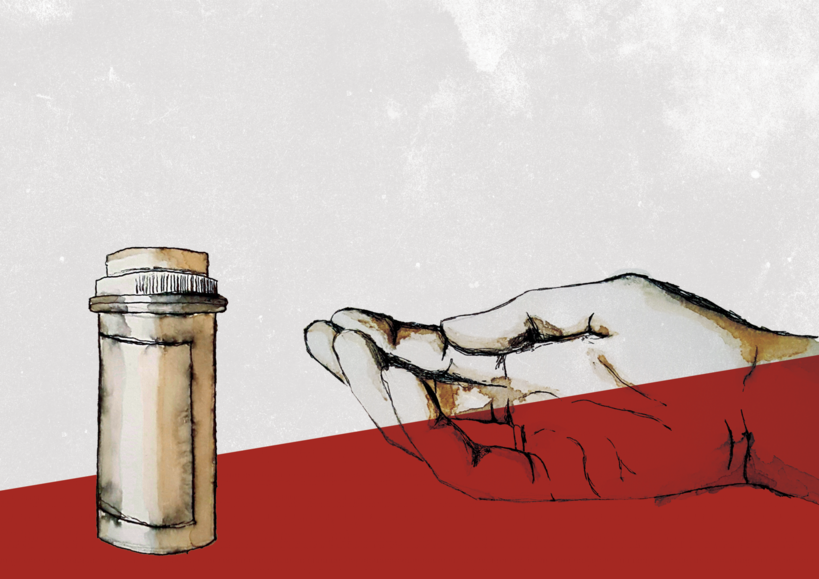Our country is in a crisis. It dwells in our rural towns and inner cities. It resides in affluent suburbs and one-bedroom apartments. It can attack your teenage brother or middle-aged mother. What sort of affliction could span across such diverse groups of people?
In recent years, opioid addiction has plagued demographic groups with traditionally low rates of drug use [1]. The prescription opioid epidemic dates back to the 1990s, a time when physicians were encouraged to prescribe opioid pain relievers [1]. Pharmaceutical companies such as Purdue Pharma gave money to organizations like the American Academy of Pain Medicine and encouraged the use of opioids for chronic pain management. Additionally, commonly cited research at the time did not accurately present the risks of opioids [1]. Thus, prescribing opioids became a common practice among physicians—to the detriment of public health.
While prescription opioids can be a great relief to patients suffering from chronic or severe pain, they are addictive in nature. Opioids manage pain by binding to specific proteins called opioid receptors located on cells in the central nervous system and digestive tract [2]. Once opioid molecules bind to these proteins, they trigger a complicated sequence of chemical signaling that ultimately results in the release of dopamine. Dopamine is released in an area of the brain critical to the reward circuit and induces feelings of pleasure [3]. When opioids activate this reward system, they can encourage repeated use to achieve that high. If a person starts taking opioids more frequently or at higher doses, the brain begins to function abnormally in the absence of drugs [3]. Over time, a person has to take more of an opioid for the neurons in the reward system of the brain to release the same amount of dopamine [2]. This, combined with other adaptations in the brain, is known as tolerance. It is significant to note that while a person is abusing opioids, other areas of the brain create lasting memories called conditioned associations [3]. These memories associate specific locations and people with feeling high and can trigger an urge to take drugs in certain situations. Conditioned associations, along with withdrawal symptoms, can promote addiction, which is defined as repetitive drug use in spite of adverse effects [1].
In the Journal of the American Medical Association, Dr. William Weeks wrote a piece on the difficult reality of opioid addiction [4]. Dr. Weeks explained that his sister, Hailey, was a successful lawyer and a child advocate in her state’s family court system. When she was about 35, she was thrown off a horse and suffered from chronic back pain for the rest of her life. She managed her pain with opioids, but when her pain physician of fourteen years retired, she could not find another doctor who would prescribe her the same high dose of pain medication. Hailey tried to wean herself off of the medication, but she experienced unbearable withdrawals. She requested medication from an emergency department and was immediately identified as a drug seeker. Her medications, therefore, would not be refilled. Hailey ended up having an altercation with a nurse that resulted in assault charges, at which time she was jailed. She died four days later at the age of 49. The medical examiner stated that “opioid and benzodiazepine withdrawal were possible causes of death” [4]. Because of her substance abuse, a once ambitious woman died prematurely in a jail cell.

Dr. Weeks explained that many of his patients, who had stories like his sister’s, turned to heroin to deter withdrawal symptoms [4]. Heroin is an opiate made from the opium poppy, whereas the broader class of opioids include opiates as well as synthetic prescription drugs. Both types of drugs act similarly on the same receptors [5]. According to the Centers for Disease Control and Prevention (CDC), approximately three out of four new users abused prescription opioids prior to using heroin [6]. The high availability and low price of heroin in the U.S. compared to prescription opioids are reasons for the dramatic rise in heroin use. The increasing spread of the drug has had devastating consequences: heroin-related deaths have more than quadrupled since 2010. People with access to health care and therefore prescription drugs are at a surprising risk for heroin addiction. Heroin use increased by 63% in people with private insurance from 2004 to 2013 [6]. Unlike some other opioids, heroin has more intense withdrawal symptoms and a “crash” after a high [7]. Heroin users also risk potential exposure to HIV or hepatitis because heroin is often injected through needles that addicts may share or reuse [2]. Furthermore, black-market heroin is not a regulated drug, so it can be cut with other drugs. A common example is lacing heroin with fentanyl, a potent opioid far easier to overdose on than heroin itself [2]. Despite these additional hazards, many people are in so much pain without heroin that they take the risks in order to feel better.
Despite the destructive cycle of addiction, it is possible to break out of it. When individuals first decide to get sober, they may go through a detoxification stage during which their bodies go into shock in the absence of drugs [3]. Withdrawal symptoms include severe pain, vomiting, and hallucinations, which can be combatted with medication. One popular kind of medication for treating opioid addiction is another opioid agonist. For example, methadone is a slow-acting opioid agonist that has been used to treat heroin addiction since the 1960s. Since it is taken orally, it slowly activates the opioid receptors. It does not produce a sudden “high” like an opioid. Methadone is only accessible through outpatient programs, and patients are monitored while taking it [3].
Chemical treatments like methadone can be paired with behavioral treatments to further help those suffering from addiction. For example, cognitive-behavioral therapy (CBT) can help target the emotional causes of addiction [8]. CBT changes the expectations a person has surrounding drug use, often through addressing conditional associations, and can help resolve some of the root problems of addiction. A popular tool for treating addiction is using a point system for negative drug tests, which gives those who are recovering the motivation to stay sober [8]. With new coping skills and medication to subdue cravings, addicts can have a successful road to recovery.
An essential component in stopping opioid and heroin addiction is implementing supervision when using opioid pain relievers, as well as limiting access in general [7]. In addition to reducing the risk for the patients themselves, it can prevent people in the greater community from becoming addicted. Encouraging doctors to use non-opioid drugs instead of highly addictive opioids can further reduce the risk of addiction. In 2013, the New York City Department of Health and Mental Hygiene issued emergency room guidelines on the prescription of opioid pain relievers. Their recommendations were to use non-opioid pain relievers (OPRs) when possible, avoid prescribing extended-release OPRs, and only give a three-day supply [6]. Due to public health initiatives like these ER guidelines, Staten Island experienced a 29% reduction in fatal opioid overdoses and overall decline in high dose prescribing in 2013 [7]. If emergency rooms across the country followed these guidelines, there could be a great reduction in opioid addiction.
By looking at the relationship between prescription opioids and heroin, our country can better combat the sharp rise in addiction in the past decade. Furthermore, discussing this addiction on a molecular level will help destigmatize the disease. It is crucial to realize that addiction changes the way the brain functions, which makes it easier for people to lose control of their addictions. With an estimated 2.1 million people suffering from opioid addiction and over half a million abusing heroin, it is more important than ever to understand this public health problem [2]. This addiction could befall anyone. It is necessary for our society to act with empathy and aim to make treatment more accessible. When we come together to support research, prevention, and recovery in addiction, there will be fewer stories like Hailey’s and more stories of successful recovery.
If you are struggling with addiction, please call the American Addiction Centers Helpline: (888) 987-6323
References
- The Prescription Opioid and Heroin Crisis: A Public Health Approach to an Epidemic of Addiction | Annual Review of Public Health . (2015). org . Retrieved 2 October 2017. http://www.annualreviews.org/doi/full/10.1146/annurev-publhealth-031914-122957#f1
- Abuse, N. I. on D. (2014, May 14). Prescription Opioids. Retrieved November 2, 2017, from https://www.drugabuse.gov/publications/drugfacts/prescription-opioids
- Kosten, T. R., & George, T. P. (2002). The Neurobiology of Opioid Dependence: Implications for Treatment. Science & Practice Perspectives , 1 (1), 13–20. https://www.ncbi.nlm.nih.gov/pmc/articles/PMC2851054/
- Weeks, W. B. (2016). Hailey. JAMA , 316 (19), 1975–1976. https://doi.org/10.1001/jama.2016.10251
- Buprenorphine Education: Opiates and Opioids heroin and opium. (n.d.). Retrieved November 7, 2017, from https://www.naabt.org/education/opiates_opioids.cfm
- Heroin Overdose Data | Drug Overdose | CDC Injury Center . (2017). gov . Retrieved 2 November 2017, from https://www.cdc.gov/drugoverdose/data/heroin.html
- Relationship between Nonmedical Prescription-Opioid Use and Heroin Use — NEJM . (2016). New England Journal of Medicine . Retrieved 10 October 2017, from http://www.nejm.org/doi/full/10.1056/NEJMra1508490#t=article
- How is heroin linked to prescription drug abuse? . (2014). gov . Retrieved 2 October 2017. https://www.drugabuse.gov/publications/research-reports/heroin/how-heroin-linked-to-prescription-drug-abuse
